Carefree Floral Americana
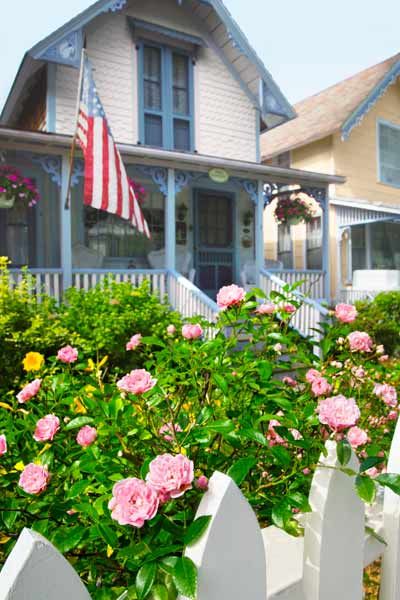
As American as fireworks in July, official state flowers honor the natural diversity of our country. The idea dates back to 1893, when, for a national garland at the Chicago World’s Fair, each state was asked to nominate a floral emblem. The sunflower was a shoo-in for Kansas, suggesting “the majesty of a golden future.” But debates raged in other states as they struggled for consensus on a single bloom. In some close contests, legislators turned to botanists to break a tie. Or they consulted schoolchildren, who, in Colorado, chose the Rocky Mountain columbine and, in Rhode Island, the violet. Most of these picks are common natives that bloom on summer roadsides or are familiar transplants, comfortably at home in their adopted state. Many are also such great all-around garden plants that—no matter where you live—they’ll thrive with little fuss, adding notes of carefree Americana to your landscape.
Here, we present all 50 state flowers, along with growing tips and recommended varieties.
Shown: No bloom holds more titles than the rose. It’s an official emblem for New York, Georgia, North Dakota, Iowa, and Oklahoma, as well as the national flower of the U.S.A.
Alabama: Camellia
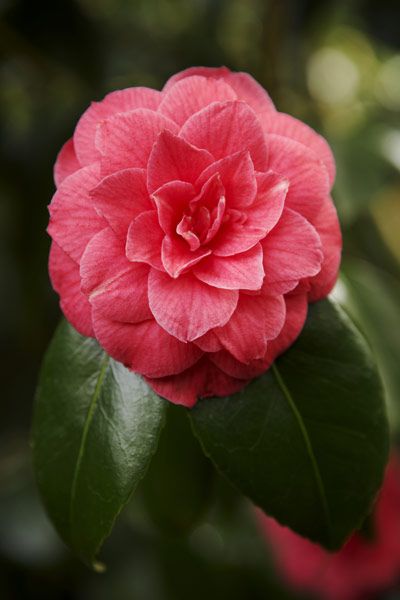
Camellia japonica
Though native to Asia, the camellia replaced goldenrod as Alabama’s state flower in 1927, when the ladies of the state successfully lobbied for the change because they felt its elegance was more appropriate than the wildflower’s weed-like looks. Camellia, with its glossy evergreen leaves and large cupped flowers, blooms when few other plants do—in late winter to early spring. Plant partial-shade-loving camellias such as ‘Rubescens Major,’ shown here, in slightly acidic soil that drains well.
Alaska: Forget-Me-Not
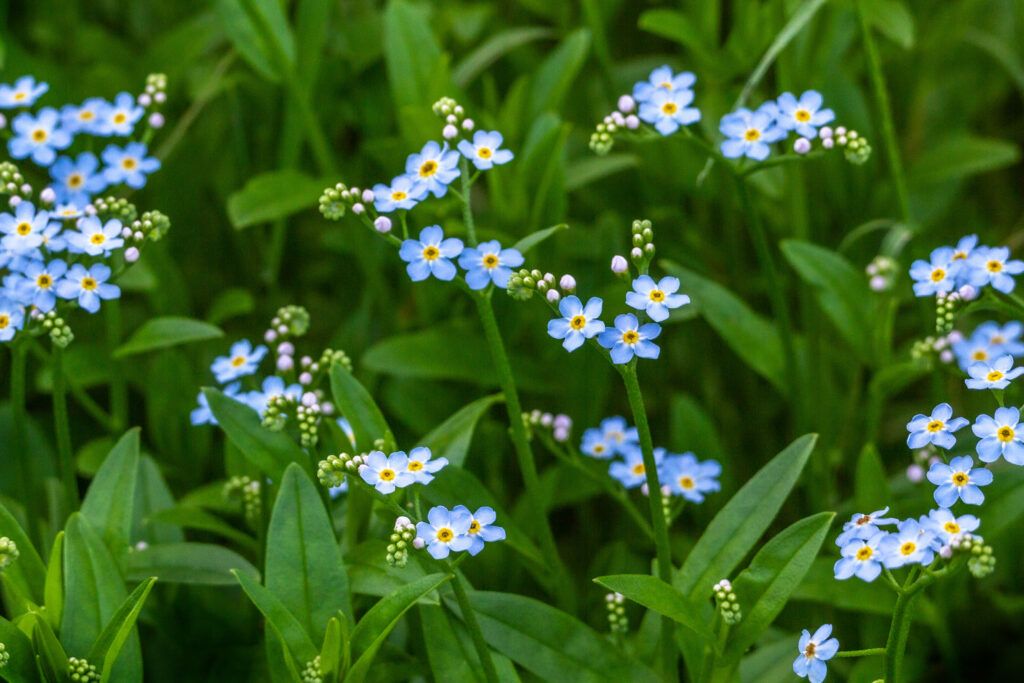
Myosotis alpestris
Before statehood, Alaska’s territorial legislature picked the wild forget-me-not as its bloom, calling it “the emblem of the pioneers upon the rugged trail” in the bill’s descriptive marginalia. With its mounding habit and flocks of true-blue spring and summer flowers, it’s a charming filler around bulbs and in rock gardens or containers. Fragrant at night, the self-sowing perennial thrives in full to dappled sun and moist, free-draining soil. The cultivar ‘Ultramarine’ (shown) has a more compact habit than the species, growing only 6 inches high and a foot across.
Arizona: Saguaro Cactus Blossom

Carnegiea gigantea
Even before Arizona achieved statehood, the saguaro cactus blossom was selected as the territory’s symbol, in 1901; its status was officially signed into law 30 years later. This fragrant, creamy white flower blooms from the tips of saguaro cacti in late spring, opening up at night and early into the morning. It is found exclusively in the Sonoran Desert.
Arkansas: Apple Blossom
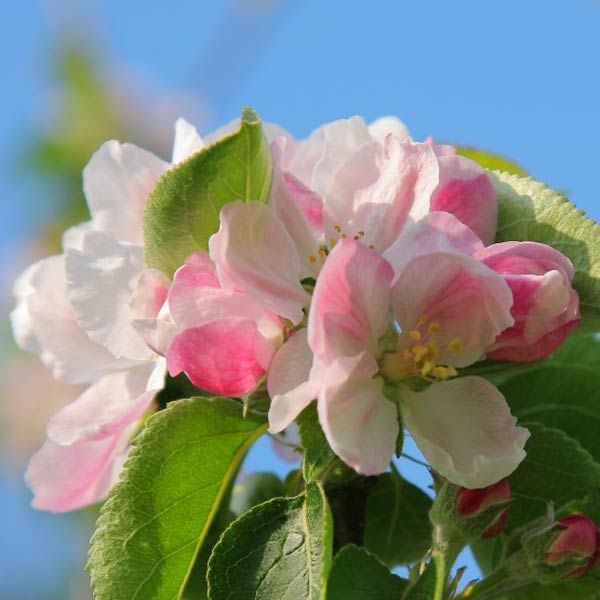
Pyrus coronaria
At one time a major apple-producing state, Arkansas decreed the apple blossom its official flower in 1901. The pink-and-white blooms of Pyrus coronaria (American crabapple tree, shown) are extremely fragrant, appearing March through May, followed in September by clusters of light green to reddish bitter fruits. The tree’s relatively small height (6 to 14 feet) and three seasons of interest make it a good candidate for a focal point in the residential landscape.
California: California Poppy
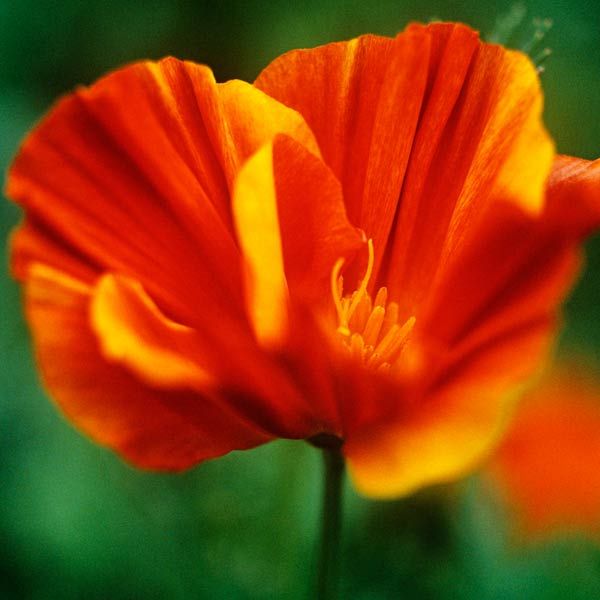
Eschscholzia californica
By the 1700s, when Spanish sailors dubbed poppy-blanketed California the “land of fire,” indigenous peoples had long valued the wildflower for food and medicine. Emblematic of the Golden State, it’s a drought-tolerant, easy-to-sow perennial in mild climates and a winning annual elsewhere, blooming in spring sunshine and closing at night. Sow seeds in well-drained soil and pull most plants once they’ve faded, but let some go to seed. The most familiar California poppy is orange-gold, but selections range widely: ‘Carmine King’ has red ruffles with white centers, ‘Mission Bells’ is a semi-double mix of hues (shown), and ‘Thai Silk Lemon Blush’ is yellow-cream.
Colorado: Rocky Mountain Columbine
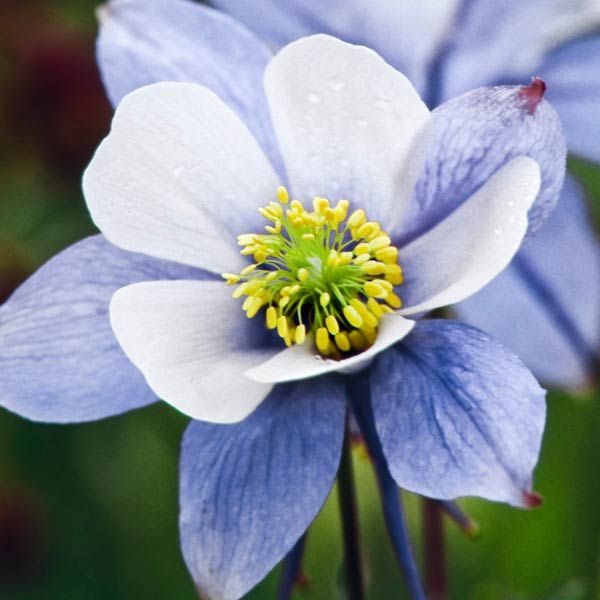
Aquilegia caerulea
Blue stands for sky, white for snow, and yellow for the state’s gold-mining history in this hardy perennial, which got the Colorado children’s vote in 1899. Later, “Where the Columbines Grow” became the state song, enhancing the appeal of the fragrant wildlife magnet. If you sow seeds in fall, the plants sprout in spring but take another year to bloom. For a head start, plant seedlings in spring, keep them moist, and deadhead flowers to encourage more. Though the Colorado native (shown) is the familiar blue and white, cultivars include dwarf variety ‘Red Hobbit’ and multihued ‘Origami Mix.’
Connecticut: Mountain Laurel
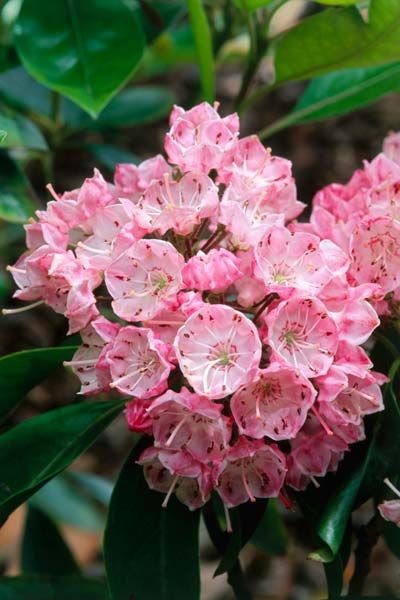
Kalmia latifolia
This fragrant, star-shaped flower was first recorded in America in 1624 by Captain John Smith and was designated Connecticut’s state flower in 1907. A plant with a past—Native Americans made spoons from the wood—this dense evergreen shrub adapts to a variety of light conditions (partial shade to full sun). Mountain laurel blooms from late spring to midsummer. All parts of the plant are toxic if ingested, so keep away from children and pets.
Delaware: Peach Blossom
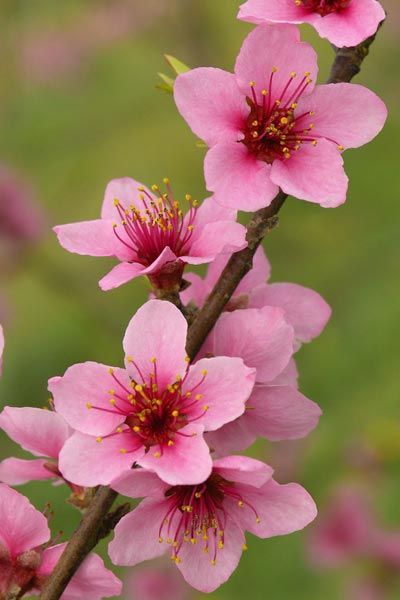
Prunus persica
In the late 19th century, Delaware’s orchards were producing so many peaches—more than 800,000 fruits annually—that the state came to be known as the Peach State. This moniker prompted lawmakers to pass an act, in 1895, adopting the peach blossom as the state flower. A deciduous tree with glossy leaves that follow showy spring flowers, it grows to a modest 25 feet tall, making it a good candidate for a backyard orchard in warmer zones.
Florida: Orange Blossom
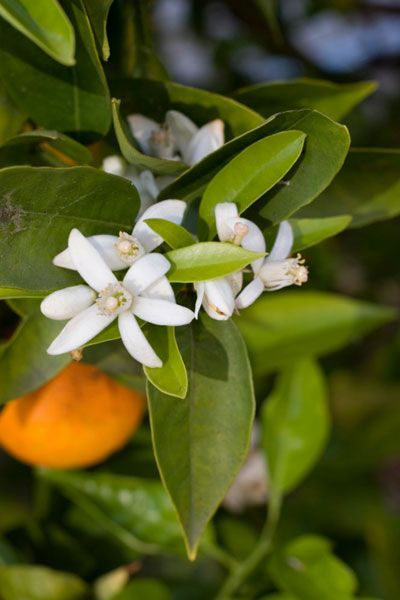
Citrus sinensis
Adopted as the state flower by the legislature in 1909, millions of these legendarily fragrant white flowers scent the air throughout central and south Florida each spring. Upright, pyramidal flower clusters turn into fruit the following autumn or winter. A compact, evergreen tree that’s easy to grow in warmer climates, this citrus tree can be successfully grown as an indoor plant where winters dip below freezing.
Georgia: Cherokee Rose
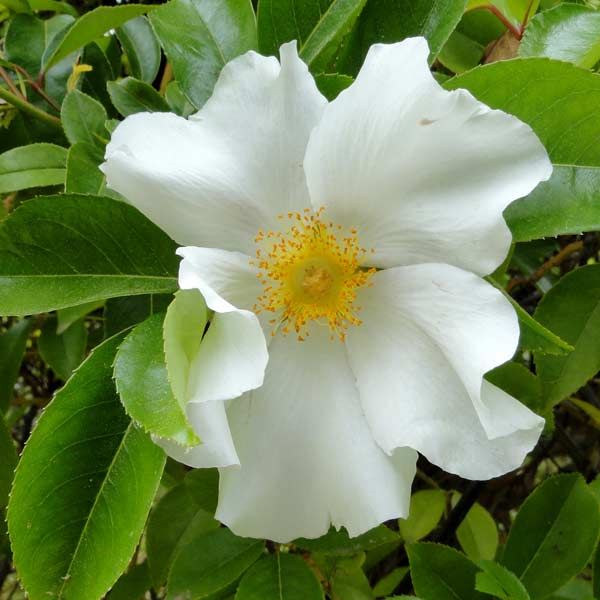
Rosa laevigata
This spring bloomer achieved state-flower status in 1916 under the false impression that it was native to the region. Despite its Chinese origins, the rose has grown naturally throughout the southeast for centuries and became a symbol of hope to the Cherokees who were forced to march the infamous Trail of Tears in 1838. The sprawling climber easily reaches 20 feet in height, and while its sweet-scented flowers are fleeting, its plump orange hips and evergreen foliage offer color in later seasons.
Hawaii: Yellow Hibiscus
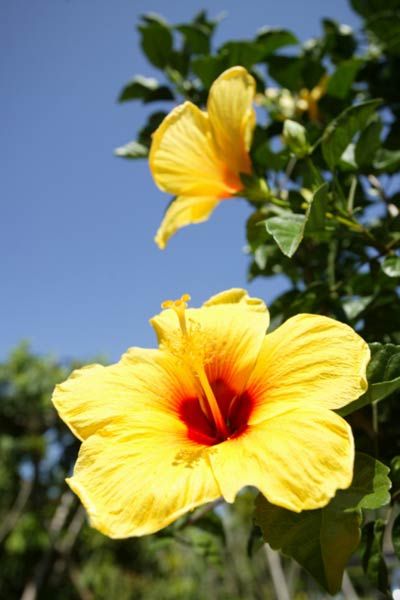
Hibiscus brackenridgei
Though the hibiscus was designated the territorial flower in 1922, it wasn’t until 1988 that the particular species Hibiscus brackenridgei was chosen by the Hawaii state legislature. A sun-loving, profuse bloomer, this shrub is covered in large, pure yellow flowers in spring and early summer. Due to its status on the federal endangered species list, Hawaiians are encouraged to plant this hibiscus, known to the locals as ma’o hau hele, in their home gardens.
Idaho: Lewis’s Mock Orange
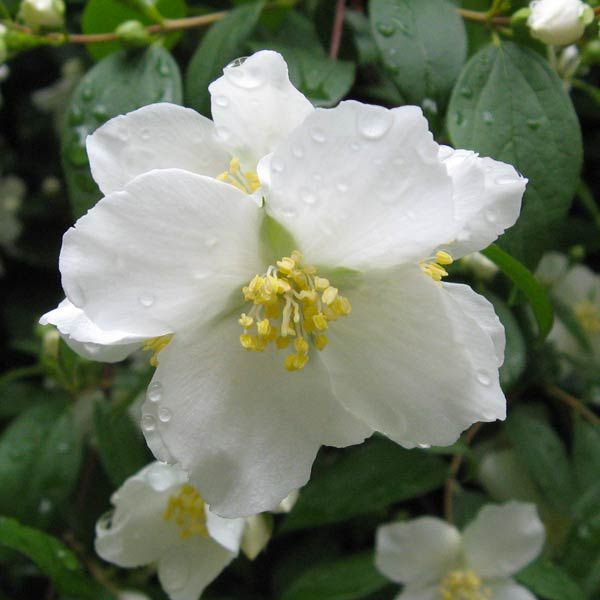
Philadelphus lewisii
First discovered and collected by Meriwether Lewis—half of the famed explorer duo—and noted in his journal in 1806, this deciduous shrub was a favorite of Native Americans for making bows, arrows, cradles, and other utilitarian goods. Designated Idaho’s state flower over a decade later, in 1931, Philadelphus lewisii grows in full sun or partial shade and tops out at about 10 feet tall. Clusters of small white flowers with a rich orange-blossom scent bloom from late spring to midsummer.
Illinois: Common Violet

Viola sororia
Voted in by schoolchildren in 1908, the native wildflower, with its purple-to-white-petaled blooms and heart-shaped leaves, is a common sight in the state’s fields and woodlands. Despite its dainty appearance, the violet makes a tough garden plant. The self-sowing groundcover is highly deer resistant, tolerates clay soil, and thrives in full sun in cooler climates or partial shade in warmer zones.
Indiana: Peony
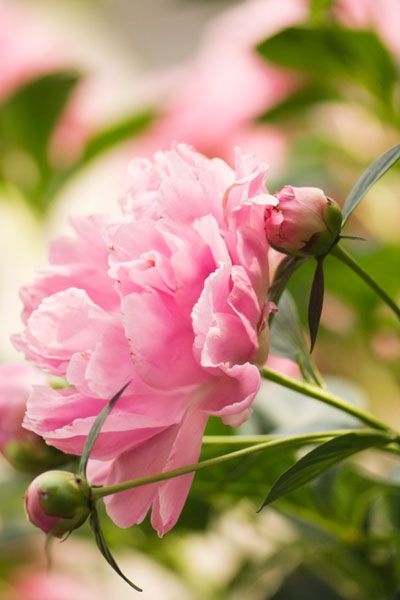
Paeonia lactiflora
The peony was designated the Hoosier State’s flower in 1957. It was the fourth different bloom to hold the title in less than 100 years, replacing the carnation, the flower of the tulip tree, and the zinnia. Once established, peonies are winter hardy, relatively pest-free, and can live for 50 years or longer. Early-summer bloomers, peony blossoms may be single, semi-double, or double (such as ‘Sarah Bernhardt,’ shown), in a range of colors from white to pink to dark red.
Iowa: Wild Rose
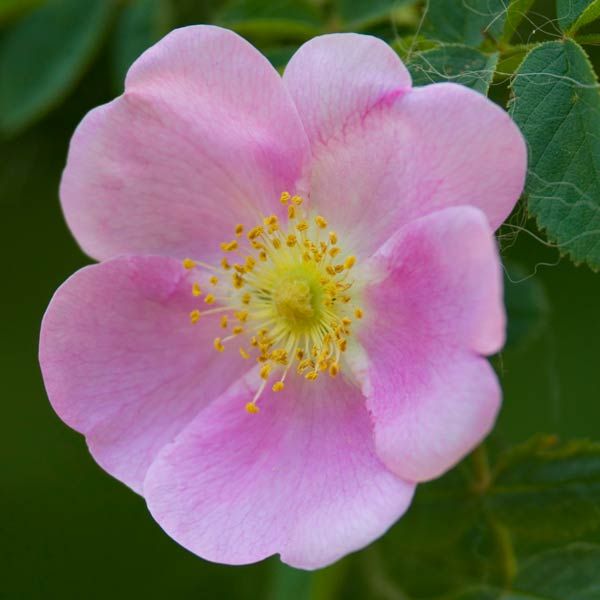
Rosa spp.
Three wild rose species native to Iowa can be considered the state flower: Rosa arkansana (shown), Rosa blanda, and Rosa carolina. These rugged natives are accustomed to the heartland’s droughts, grazing herds, and even wildfires. Studded with pink-and-white blooms in summer and hot-colored hips through winter, these shrubs put on a long-lasting show along sunny roadways, hillsides, and any open space where they are free to vigorously spread.
Kansas: Sunflower
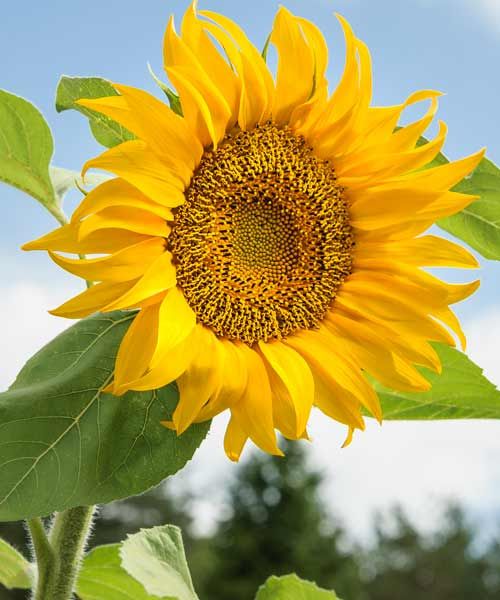
Helianthus annuus
Fast-growing, happy-faced blooms with edible seeds, sunflowers supplied Native Americans with food and oil and later sustained settlers along the Santa Fe Trail. Their nodding roadside gold is a hallmark of Kansas summers, but their drama is for everyone. Plant the self-sowing annual from seed after the last spring frost in sunny, well-drained soil, and water moderately; stake tall growers in windy spots. Giant varieties include the 12-foot yellow heirloom ‘Mammoth Russian’ (shown) and the 15-foot golden ‘Paul Bunyan,’ while ‘Velvet Queen’ is a 4-foot dwarf variety with orange-red bicolored blooms.
Kentucky: Goldenrod
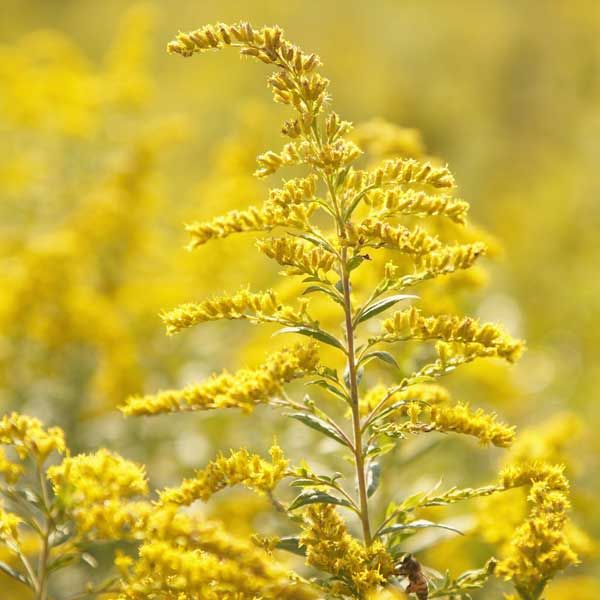
Solidago sp.
Per a suggestion by the Kentucky Federation of Women’s Clubs, the goldenrod became the state’s official flower in 1926. More than 30 species of this carefree, self-sowing herb grow in fields throughout the state, and it even appears on the state flag. If planting goldenrod in your garden, know that different species (there are about 100 in all) require quite differing soil conditions. Consider the cultivar’s native habitat before siting it in your yard.
Louisiana: Southern Magnolia
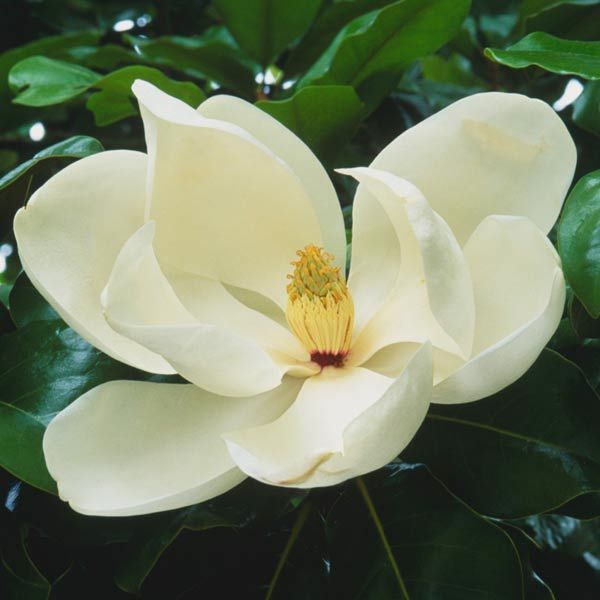
Magnolia grandiflora
Despite the tree’s impressive height (80 feet) and unusual glossy green leaves with a fuzzy brown underside, it’s the huge, fragrant creamy white flowers that inspired Louisiana to designate the magnolia as the official state emblem in 1900. This remarkable flower almost lost its place in 1941, when a band of iris enthusiasts pursued a re-vote. The summer-blooming magnolia prevailed, and the Louisiana iris was declared the official state wildflower.
Maine: Eastern White Pine Cone and Tassel
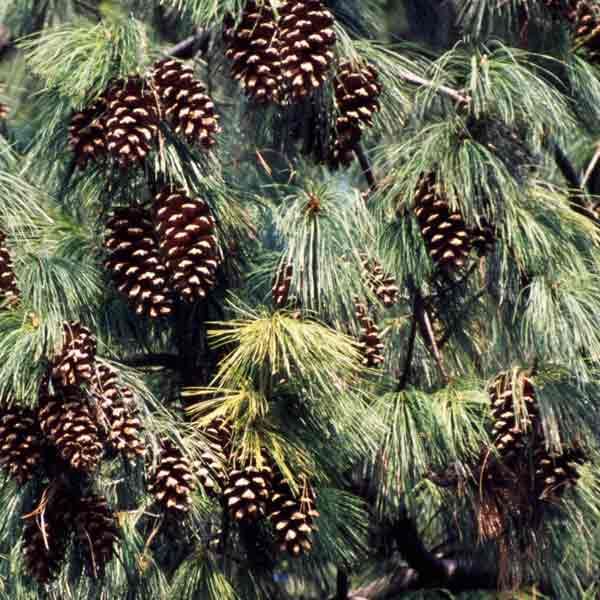
Pinus strobus
The eastern white pine is considered the largest conifer in the northeastern United States. Yellow clusters of male and pink clusters of female flowers (or strobili) occur on the same tree. Following pollination, the result is a green cone that matures in two years to the familiar 4- to 8-inch-long brown cones (the fruit). Adopted as the official flower by the state legislature in 1895.
Maryland: Black-Eyed Susan
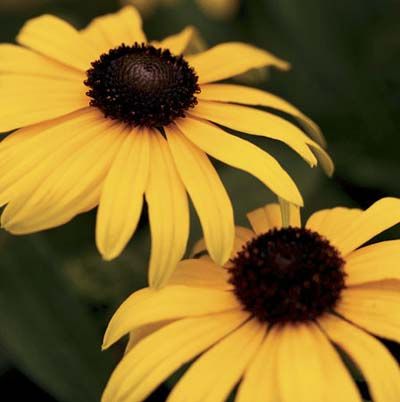
Rudbeckia hirta
Native east of the Rockies, this member of the sunflower family was thriving throughout Maryland when the state’s general assembly proposed it as the official bloom. Sun-loving and drought-adapted, the 3-foot-tall biennial freely self-sows, flowers through summer and fall, and draws butterflies in droves. Direct-sow seeds or transplant seedlings after the last spring frost, and look for lively hybrids: ‘Indian Summer’ (shown) has enormous gold flowers, and ‘Prairie Sun’ flaunts bicolored petals and pale green centers.
Massachusetts: Mayflower
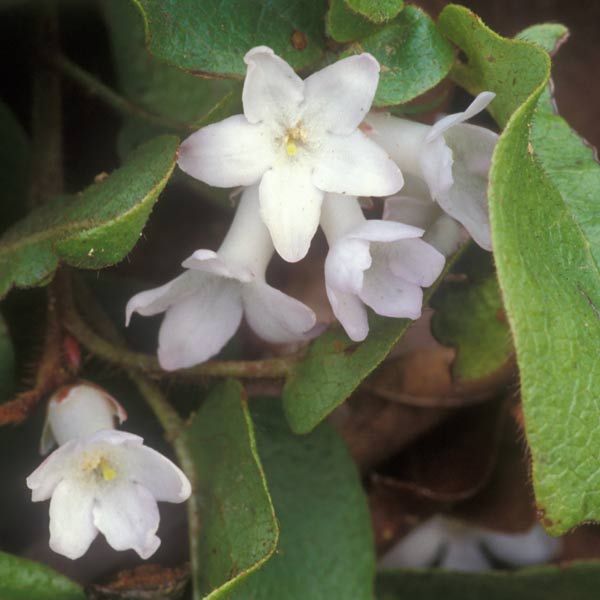
Epigaea repens
The mayflower was elected state flower in 1918 by a two-thirds vote of schoolchildren. This very fragrant, trailing, evergreen plant grows close to the ground, with five-petal pink-and-white flowers that bloom in spring. Difficult to transplant and establish, this woodland flower appreciates deep to light dappled shade and has been on the endangered list since 1925.
Michigan: Apple Blossom
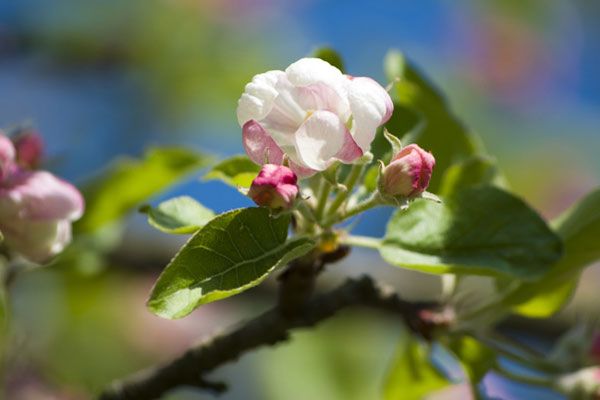
Pyrus coronaria
Having gained a worldwide reputation for apples, Michigan’s legislature adopted the apple blossom as the state flower in 1897. One of the most beautiful flowering fruit trees, the crabapple’s small, highly fragrant pink-and-white flowers bloom in early spring, followed in September by clusters of light green to reddish bitter fruits. The tree’s compact height (6 to 14 feet) makes it a good focal point for a landscape.
Minnesota: Showy Lady’s Slipper
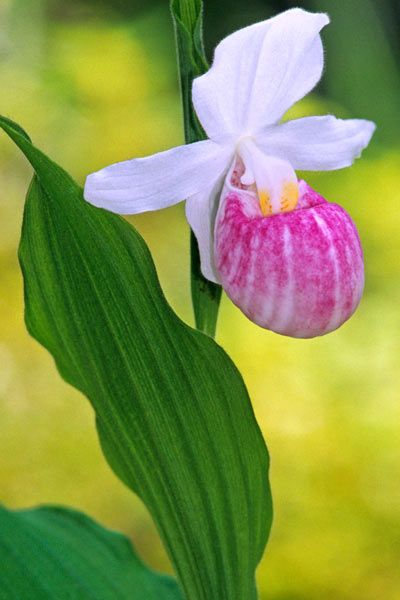
Cypripedium reginae
Named for its slipper-shaped pouch, this wild pink-and-white orchid was elected the state flower in 1902. Found growing in open fens, bogs, swamps, and damp woods where there is plenty of light, lady’s slippers mature slowly, taking up to 16 years to produce their first flowers. Travelers can view more than 10,000 of the blooms along Minnesota’s Lady Slipper Scenic Byway, where they are at their best in late June to early July.
Mississippi: Southern Magnolia
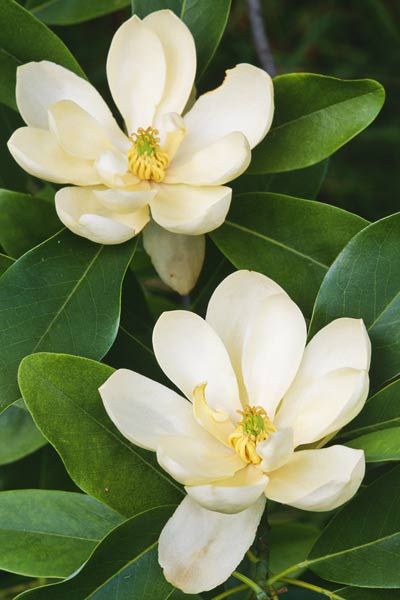
Magnolia grandiflora
As iconically Southern as sweet tea and bluegrass bands, this native broadleaf evergreen tree is a landscape staple across the region. Yet it wasn’t officially adopted as Mississippi’s state flower until 1952, a half-century after schoolchildren declared it their pick. It’s not hard to understand why it eventually earned approval, however. In spring, the stately tree is awash with creamy white flowers that are up to a foot wide and release a delightful lemony perfume.
Missouri: Downy Hawthorn
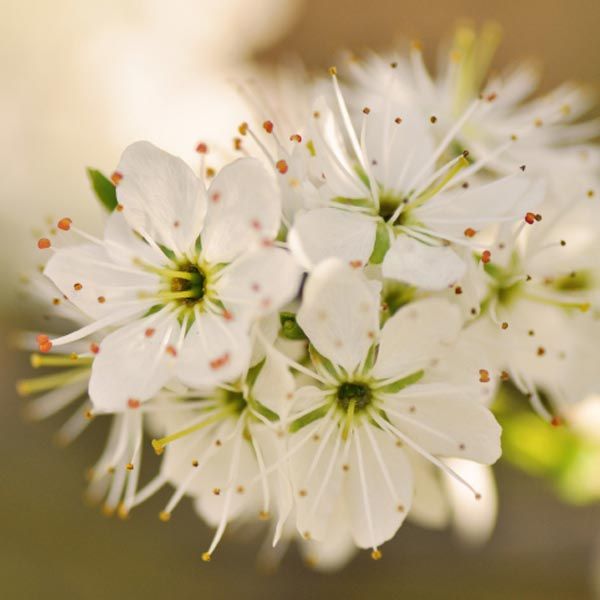
Crataegus mollis
In 1923, hawthorn was decreed the state flower of Missouri for the beauty of its flower, fruit, and foliage. Dense, woolly clusters of small white flowers that resemble orange blossoms bloom in early spring, followed in the fall by pear-shaped, softly hairy fruit that resemble little apples or rose hips. More than 75 species are found in Missouri. Most hawthorn prefer full sun but can grow in light shade.
Montana: Bitterroot
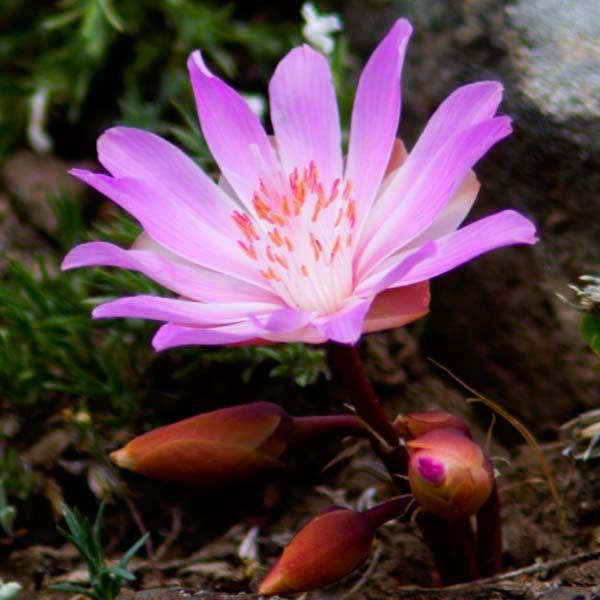
Lewisia rediviva
During the time of Lewis and Clark, the bulb of bitterroot was so prized as a staple food and source of medicines by some Native American tribes that a bag of it could be traded for a horse. Many years later, the Montana Floral Emblem Association was formed to pick a state flower, and bitterroot was the clear winner, becoming official in 1895. The plant thrives in dry, gravelly soil and from early spring to summer throws large, pink flowers on short stems close to the ground.
Nebraska: Goldenrod
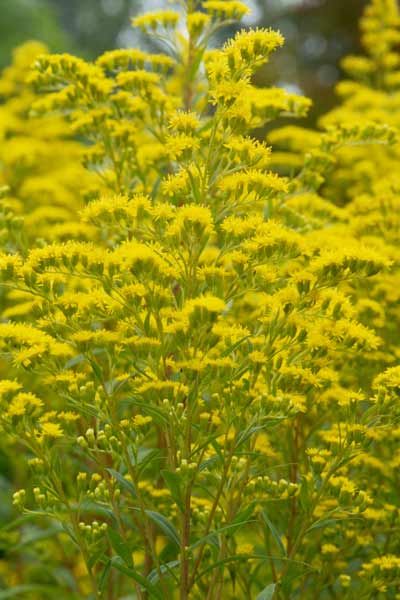
Solidago serotina
The goldenrod was declared Nebraska’s state flower by legislative action in 1895. Solidago serotina (shown) is a variety of the perennial herb notable for its height, about 2 to 3 feet tall. More than a dozen species can be found blooming from late July to October. Goldenrod thrives in poor to moderately fertile, well-drained soil in full sun. Despite its reputation, goldenrod is not the source of fall allergies; ragweed, which blooms at the same time, is.
Nevada: Sagebrush

Artemisia tridentata
You’ll find this tall, evergreen perennial shrub in the deserts of the western U.S. The state symbol since 1917, sagebrush survives where other plants can’t and serves as an important source of food for grazing animals in the winter. In mid-autumn, feathery grayish, white, or yellow blooms dot the ends of branches that are clothed in aromatic downy, silvery gray leaves. Sagebrush grows in poor to moderately fertile dry, fast-draining soil in full sun.
New Hampshire: Purple Lilac
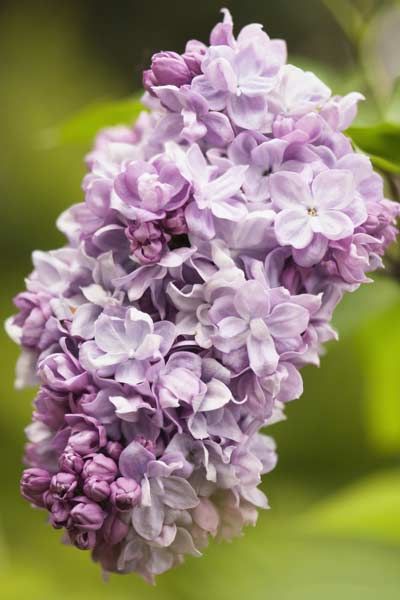
Syringa vulgaris
Despite having been imported from England and planted at Governor Benning Wentworth’s home in Portsmouth, New Hampshire, in 1750, the selection of the purple lilac as state flower did not happen until 1919. This showy, fragrant flower was chosen as the state emblem because its hardiness was symbolic of the people of the state. Common lilac blooms in late spring and early summer; its spreading habit makes it a popular choice for hedges.
New Jersey: Common Violet
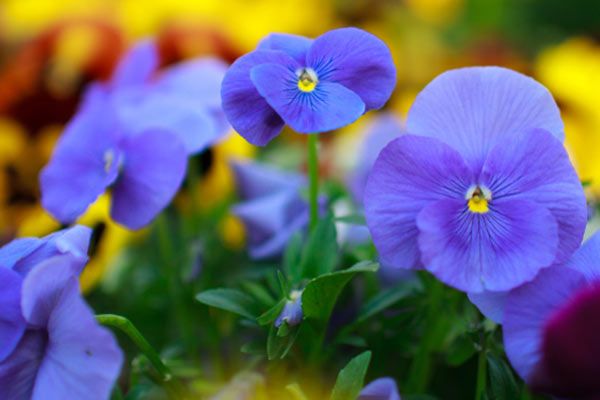
Viola sororia
This easy-to-grow native has been widely accepted as Jersey’s state flower since 1913, but it took some nudging from garden clubs to make it official in 1971. Violets are self-sowing, hardy groundcovers that bloom in fields, lawns, and anywhere they can find warm sunshine. The flowers are sometimes deep violet-blue but more commonly white, heavily speckled, and streaked violet-blue around the centers.
New Mexico: Yucca
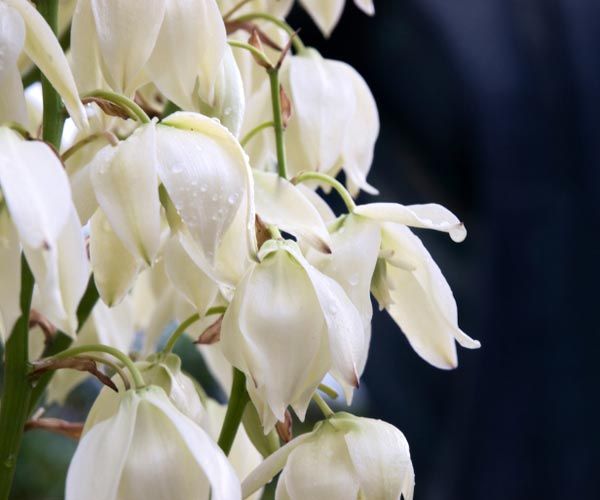
Yucca spp.
The yucca, seen as a symbol of sturdiness and beauty, dots the New Mexico landscape and thrives in well-drained soil under dry, hot conditions. Chosen as the state flower in 1927 when put to a vote of schoolchildren, the yucca can grow roots that stretch for 100 feet or more in search of water. White flowers bloom in summer on tall spikes 4 to 5 feet tall. A useful plant, the flowers, stalks, and fruit are edible, and the roots were used by Native Americans to make soap.
New York: Rose
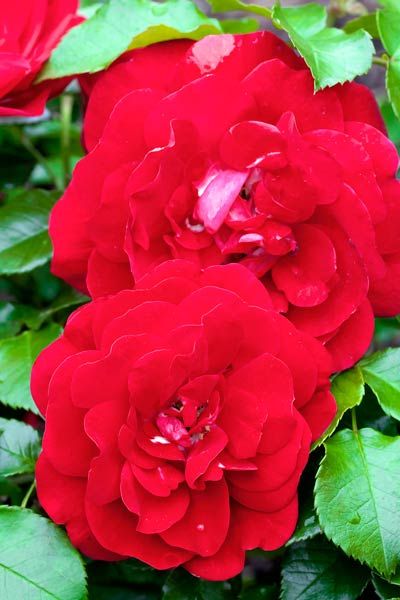
Rosa
After New York schoolchildren singled out this classic perennial (also our national flower, with specific cultivars being the picks of four other states), the state claimed any rose, wild or cultivated, as its own. The group ranges from mini shrubs to towering vines, all requiring at least 5 to 6 hours of sun a day, well-drained soil, and good air circulation. A local rose society can suggest varieties suited to your climate. Plant in fall or early spring; feed until midsummer, keep soil moist, and mulch beds for winter. Of the 35 rose classes, hybrid teas are America’s most popular; regional natives, heirlooms predating 1867, and new disease-resistant varieties, such as the Easy Elegance series (shown), are easiest to grow, while rugosas are the hardiest.
North Carolina: Flowering Dogwood

Cornus florida
An official state emblem since 1941, the native dogwood grows naturally across the region—usually at the edges of woodlands, where it’s protected from wind and sun. Given well-drained soil and a little shade, it makes a lovely landscape tree, too, as this dogwood only reaches 20 to 40 feet tall, a perfect size for smaller yards. In late spring, small clusters of pale green flowers surrounded by white or pink bracts emerge, followed by clusters of bright red fruit.
North Dakota: Wild Prairie Rose
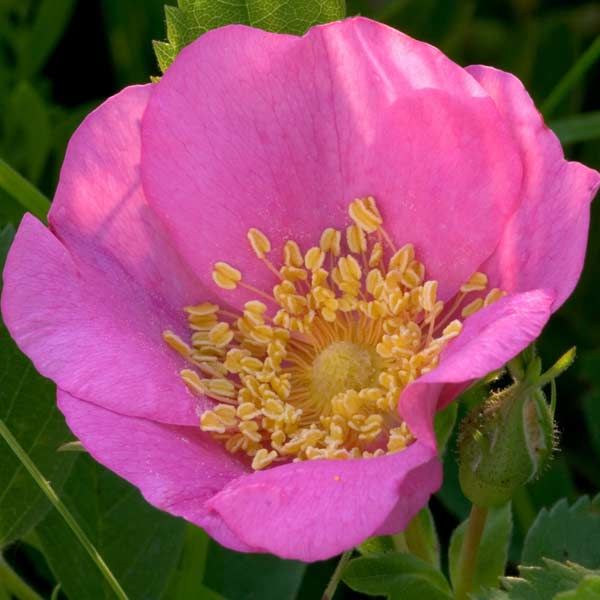
Rosa arkansana
Though some might deem this fast-growing native as a weed, the University of North Dakota’s first graduating class picked this shrub’s bright pink flower as the inspiration for the school colors in 1889. Women’s clubs advocated that the prairie rose receive state-flower status nine years later. In 1907, the wild prairie rose, with its long-lasting summer blooms and wonderful fragrance, became the state’s official flower.
Ohio: Scarlet Carnation
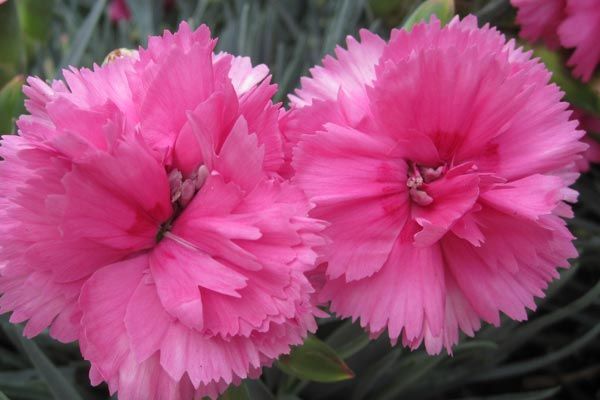
Dianthus caryophyllus
This flower was elected the state’s emblem as a nod to the late President William McKinley, who hailed from Ohio and liked to sport a red carnation on the lapel of his jacket. The bright flowers with a strong clove-like scent grow in full sun, and the blooms emerge in the summer. This wild species has been bred to produce many of the carnations that are suitable for cutting. For longer-lasting cut blooms, harvest when still tight or barely open.
Oklahoma: Oklahoma Rose
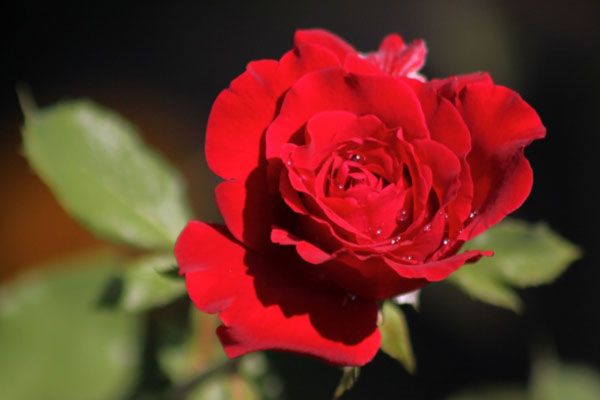
Rosa ‘Oklahoma’
After holding the title as the territorial and state flower for more than 114 years, mistletoe was replaced by ‘Oklahoma’ rose in 2004. A hybrid of two noteworthy tea roses, it was patented in 1963. Dark red, fragrant, and an impressive 5 inches across, the blooms appear in flushes throughout the growing season. Like all hybrid tea roses, ‘Oklahoma’ requires full sun and ample water. It can be grown in the ground or in a winter-protected container.
Oregon: Oregon Grape
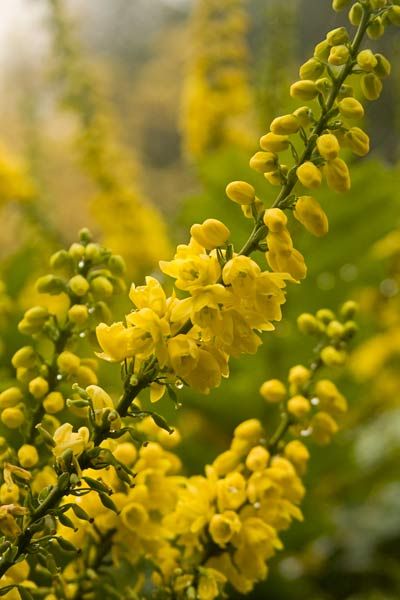
Mahonia aquifolium
Declared the state flower in 1899, the Oregon grape sports canary yellow flowers in spring atop a cradle of prickly evergreen leaves. Edible berries follow and ripen to a metallic blue-black by fall. The 3- to 6-foot-tall shrub is native to Oregon’s coast but makes an easy-care garden plant in warmer zones. Plant en masse or as a hedge in a shady or partially shaded bed.
Pennsylvania: Mountain Laurel
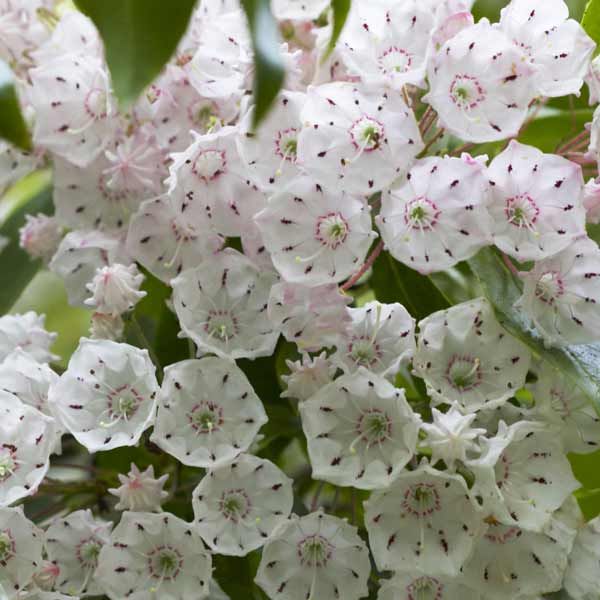
Kalmia latifolia
Showy pink or white flowers bloom into a colorful display along the mountainsides in Pennsylvania each spring, attracting thousands of admirers. Perhaps this is why the mountain laurel beat out the azalea as the state flower in 1933, when Governor Gifford Pinchot decided between the two contenders. It typically grows as a dense, rounded shrub and prefers well-drained, acidic soil.
Rhode Island: Violet
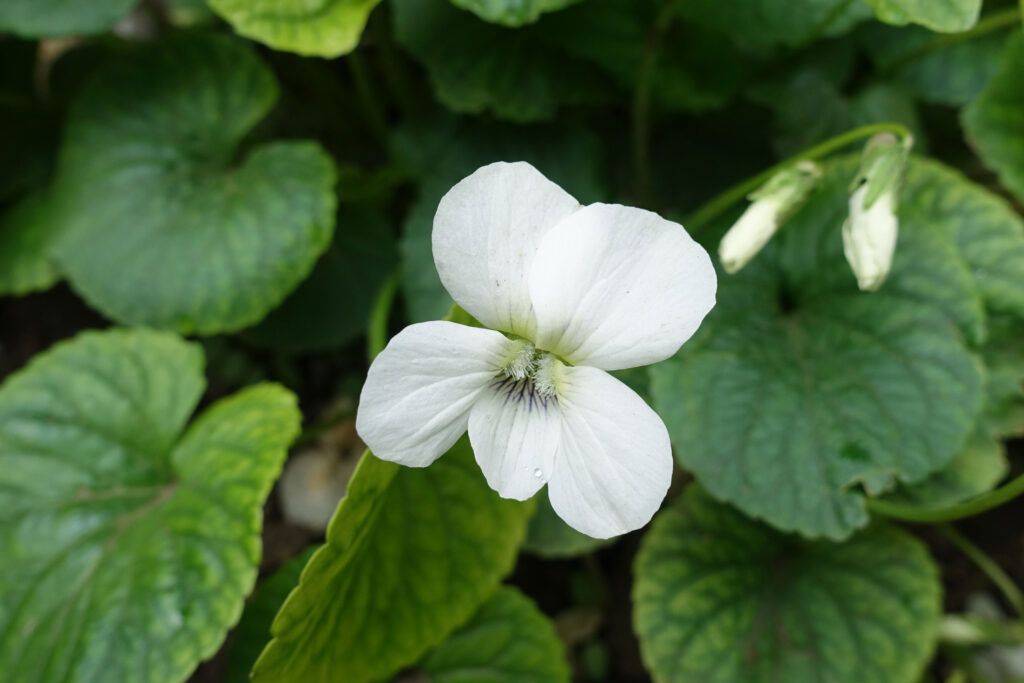
Viola sororia
Picked by schoolchildren in 1897, this East Coast native didn’t get the state’s formal nod until 1968. By then, Wisconsin, Illinois, and New Jersey had also claimed it. Its purple blooms erupt in spring, and its heart- shaped leaves last all summer, carpeting the ground along woodland walks and shrub borders. A prolific self-seeding perennial that tolerates clay soils, it’s happiest in partial sun and moist, well-drained beds. Plant it in spring or fall from seed or transplants. For variations on the violet theme, look for ‘Freckles,’ pale with purple speckles, or the snowy white ‘Albiflora’ (shown).
South Carolina: Yellow Jessamine
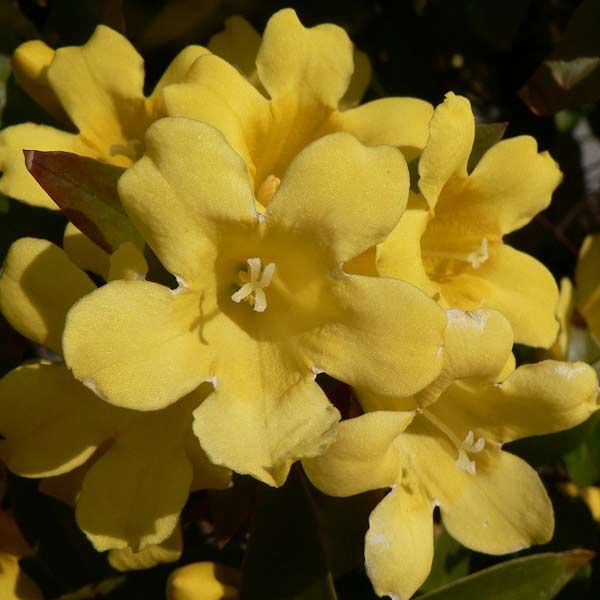
Gelsemium sempervirens
Adopted in 1924, South Carolina’s state flower is arguably its quintessential vine. A regional favorite for growing up trees, arbors, and porch trellises, the native climber boasts heavenly scented yellow flowers from February to April, scarlet berries in summer, and purple-tinged leaves in winter. It’s a fast grower but well mannered, prefers sun but still blooms in shade, and adapts to most soil conditions.
South Dakota: Pasque Flower
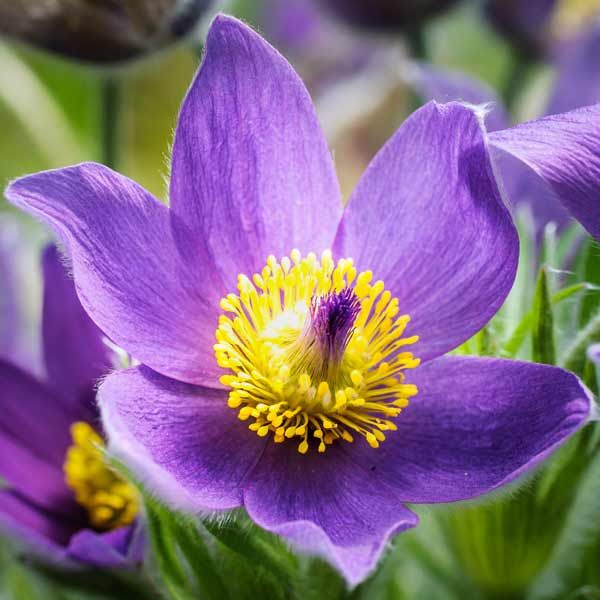
Pulsatilla patens
Even before winter has quite left South Dakota, this prairie flower lifts its bloom above the snow, signaling spring’s approach. Such dogged optimism in the face of lingering bleakness must have recommended the so-called prairie crocus to the state’s legislature back in 1903. A buttercup relative that grows wild across America, especially at higher altitudes, this perennial likes dry, sandy soil and full sun and is fairly drought tolerant. It grows from seed sown in fall, blooms in shades of violet to white, and produces dramatic seed heads before going dormant in summer heat.
Tennessee: Iris
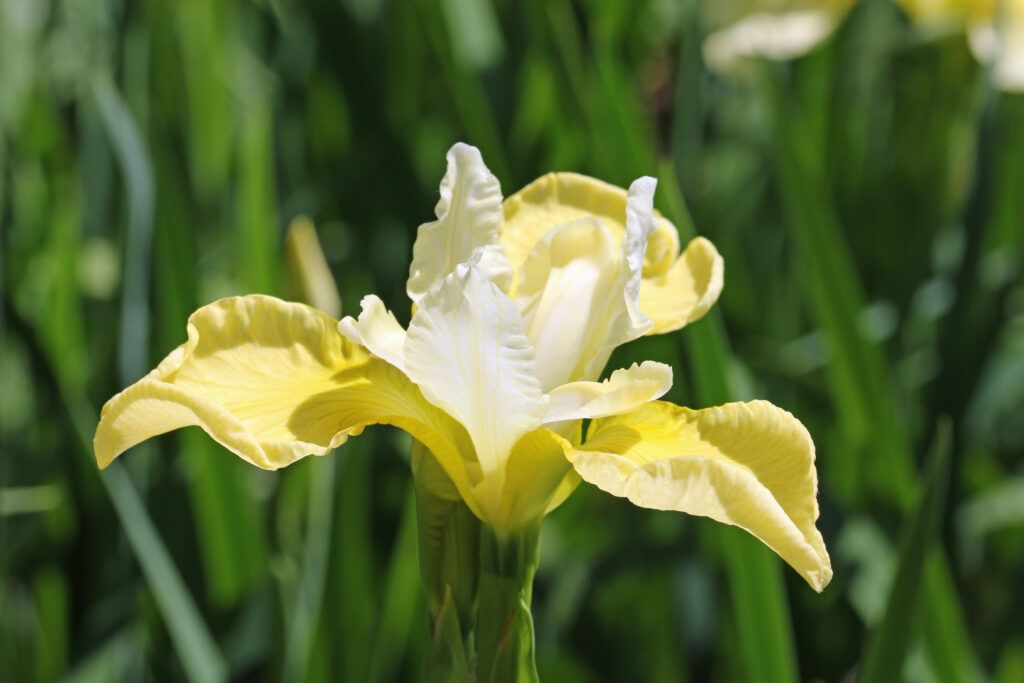
Iris
In 1919, Tennessee chose the wild passionflower but in 1933 decided to also adopt the iris, and designated it the official “cultivated” bloom 40 years later. This floral icon assumes a range of sizes, forms, and colors. Bearded iris can reach a height of 4 feet and rebloom; Siberian takes the most cold and drought; Japanese and Louisiana like moister ground. Plant this sun-loving perennial in late summer, water it well, and fertilize in spring and after blooms fade. Standouts include bearded, almost-black ‘Superstition’ and the Siberian yellow-and-white ‘Butter and Sugar’ (shown).
Texas: Texas Bluebonnet

Lupinus spp.
The bluebonnet was officially designated in 1901 and later immortalized in song. Today, five homegrown species of annual and perennial blue-bonnets are recognized as the state’s flower, and they carpet springtime fields and highway verges. Water seeds only on the day of planting, and water transplants sparingly, repeating only when soil is dry an inch down. Though the Texas native (shown) is commonly deep violet, other cultivars include some intriguing non-blue colors, like cream ‘Noble Maiden’ and maroon-and-white ‘Alamo Fire.’
Utah: Sego Lily
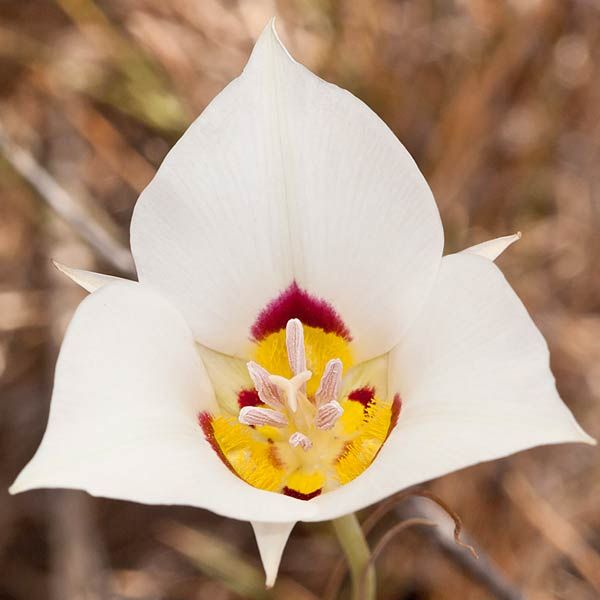
Calochortus nuttallii
After winning the vote of schoolchildren, this showy, drought-tolerant native became Utah’s official state flower in 1911. Native Americans and early settlers used to feast on the bulbs of these late-spring-blooming flowers, eating them roasted, boiled, or raw; and the delicate flowers, which bloom white, lavender, or yellow, still grow naturally in the Great Basin’s open grasslands
Vermont: Red Clover
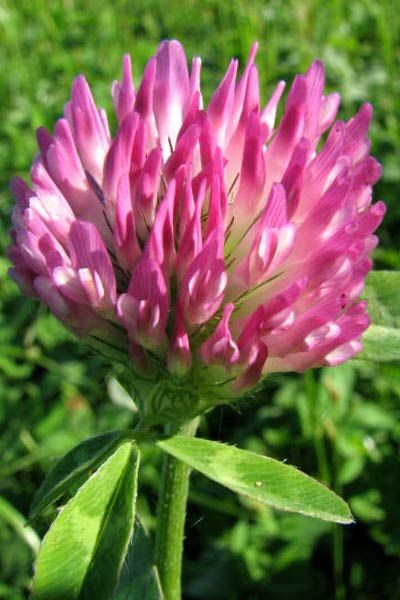
Trifolium pratense
Chosen in 1895 to represent Vermont’s farms and fields, red clover is a European variety that has naturalized across New England. Farmers grow red clover as food for cows and other animals. Though rarely grown in garden settings, it makes an effective cover crop for the vegetable patch, where it boosts soil nitrogen during the off-season.
Virginia: Flowering Dogwood
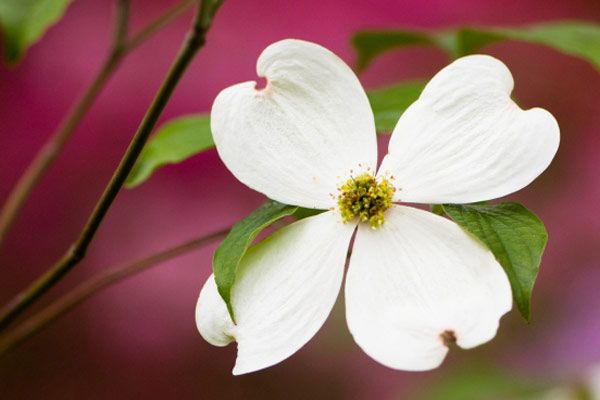
Cornus florida
In early spring, you can’t miss Virginia’s flowering dogwoods, which have held the official state title since 1918. The native tree can be found in front lawns, schoolyards, parking lots, and roadsides. In late spring, small clusters of pale green flowers surrounded by white or pink bracts emerge, followed by clusters of bright red fruit and showy red fall foliage. Given well-drained soil and a little shade, it makes a lovely landscape tree, reaching up to 40 feet tall.
Washington: Coast Rhododendron
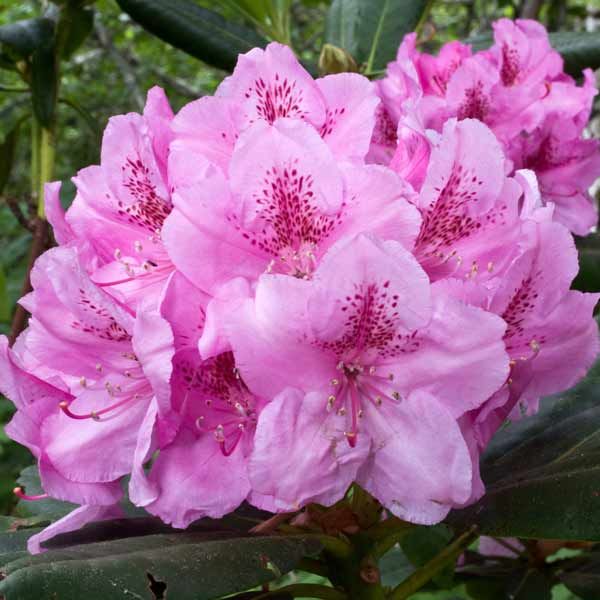
Rhododendron macrophyllum
This large, free-flowering shrub has been the Evergreen State’s official flower since 1959. In mid- to late spring, compact trusses of rose, purple, or white flowers bloom. Its evergreen foliage provides a leafy backdrop year-round. Suitable for sun, it can grow to an impressive 15 feet tall and wide.
West Virginia: Rosebay Rhododendron
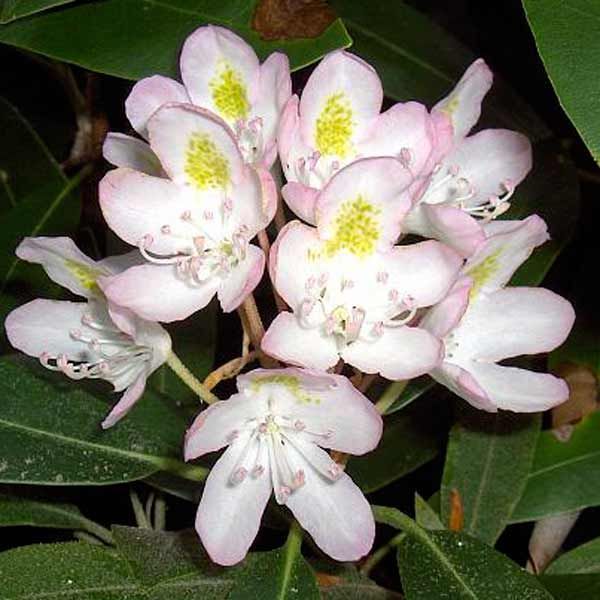
Rhododendron maximum
A common sight in the Great Smoky Mountains, this native rhododendron became the official state flower in 1903, following a poll at public schools. Clusters of bell-shaped flowers, spotted with olive green to orange, bloom late in the season. Its glossy evergreen foliage, cold hardiness, and willingness to flower even in dense, shaded woods are much of the shrub’s charm.
Wisconsin: Wood Violet
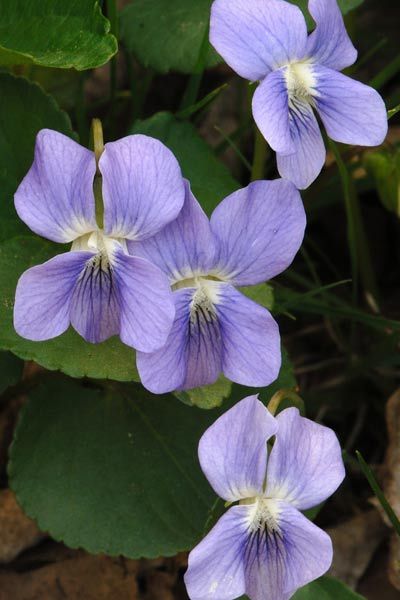
Viola papilionacea
In 1909, the violet was voted into its official role by schoolchildren, narrowly beating out the wild rose and water lily. The moisture-loving wildflower commonly makes itself at home in woodlands, stream banks, and well-watered lawns. Violets are self-sowing, hardy groundcovers that bloom profusely over long periods in summer and may self-seed freely.
Wyoming: Indian Paintbrush
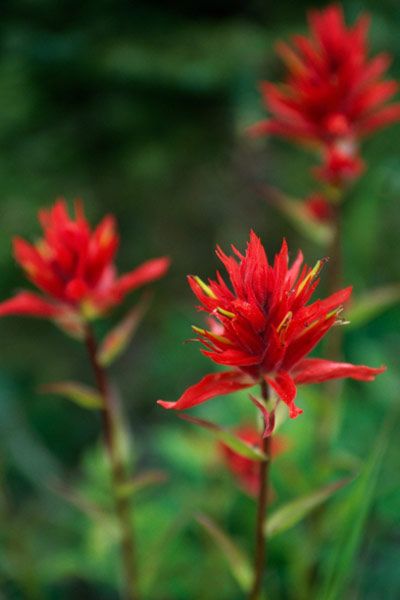
Castilleja linariifolia
This western native perennial won its state-flower title in 1917. The showy orange-to-red wildflowers bloom in early spring and often remain in full color all summer long. Reaching up to 2 feet tall, Indian paintbrush is a challenge to cultivate and has parasitic tendencies, stealing water and nutrients from the roots of neighboring plants.
